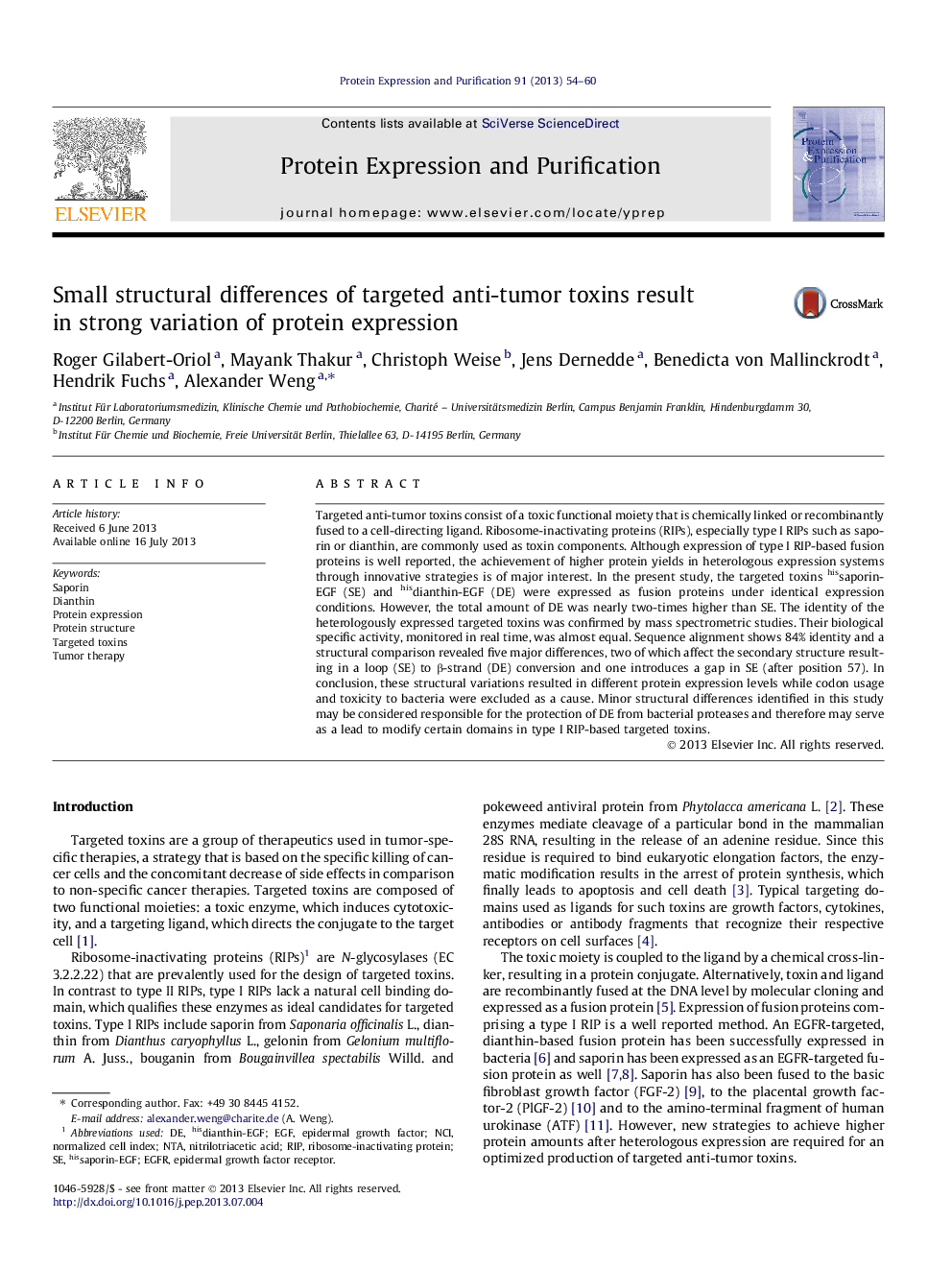| Article ID | Journal | Published Year | Pages | File Type |
|---|---|---|---|---|
| 2020528 | Protein Expression and Purification | 2013 | 7 Pages |
Abstract
Targeted anti-tumor toxins consist of a toxic functional moiety that is chemically linked or recombinantly fused to a cell-directing ligand. Ribosome-inactivating proteins (RIPs), especially type I RIPs such as saporin or dianthin, are commonly used as toxin components. Although expression of type I RIP-based fusion proteins is well reported, the achievement of higher protein yields in heterologous expression systems through innovative strategies is of major interest. In the present study, the targeted toxins hissaporin-EGF (SE) and hisdianthin-EGF (DE) were expressed as fusion proteins under identical expression conditions. However, the total amount of DE was nearly two-times higher than SE. The identity of the heterologously expressed targeted toxins was confirmed by mass spectrometric studies. Their biological specific activity, monitored in real time, was almost equal. Sequence alignment shows 84% identity and a structural comparison revealed five major differences, two of which affect the secondary structure resulting in a loop (SE) to β-strand (DE) conversion and one introduces a gap in SE (after position 57). In conclusion, these structural variations resulted in different protein expression levels while codon usage and toxicity to bacteria were excluded as a cause. Minor structural differences identified in this study may be considered responsible for the protection of DE from bacterial proteases and therefore may serve as a lead to modify certain domains in type I RIP-based targeted toxins.
Related Topics
Life Sciences
Biochemistry, Genetics and Molecular Biology
Biochemistry
Authors
Roger Gilabert-Oriol, Mayank Thakur, Christoph Weise, Jens Dernedde, Benedicta von Mallinckrodt, Hendrik Fuchs, Alexander Weng,
